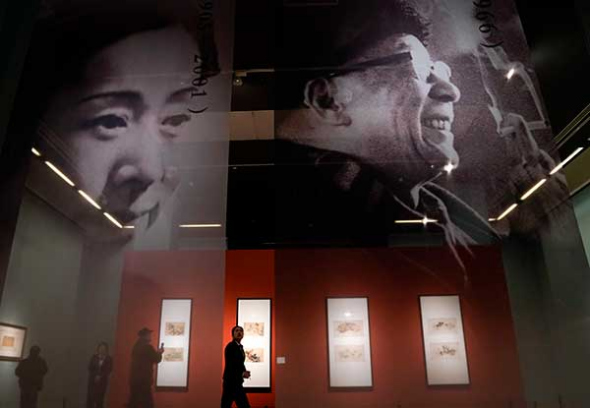
The National Art Museum of China has re-created the "Lao She Gallery" as part of its Beauty in the New Era exhibition. The gallery is a tribute to author Lao She and his wife, Hu Jieqing, some of whose collected artworks are on display at the show.(Photo provided to China Daily)
Their works are an exploration of how to modernize Chinese art traditions, so they embrace the diverse interests of the emerging middle-class in the city at that time.
Works on display include paintings by Qi Baishi, Fu Baoshi and Li Keran, which mark their breakthroughs in integrating Western styles in the three major genres of classical Chinese ink painting - flower and bird, mountain and water, and figures.
Other artists, such as Lin Fengmian and Xu Beihong, represent a generation who studied in Europe, were exposed to contemporary vanguard movements and brought an avant-garde view back to China. They were adept at both ink and oil paintings.
Some of the works are being shown for the first time, such as Geese, an ink painting by Xu Beihong who heralded the realism school in 20th-century Chinese art.
Xu is long admired for his depiction of horses, symbolizing the national spirit. The 1935 work, Geese, shows another subject Xu excelled at - one that he is less well-known for. His relaxed lines and shading lend grace and charm to a group of commonly seen domestic fowl in this work.
The exhibition occupies six halls at the National Art Museum of China. One of them is dedicated to the works that were once in the joint collection of Lao She (1899-1966), a significant novelist and dramatist, and his wife, Hu Jieqing.
They were donated to the museum, along with dozens of other paintings and calligraphic pieces, by their children two years ago.
The couple befriended several painters shown at the exhibition.


















































